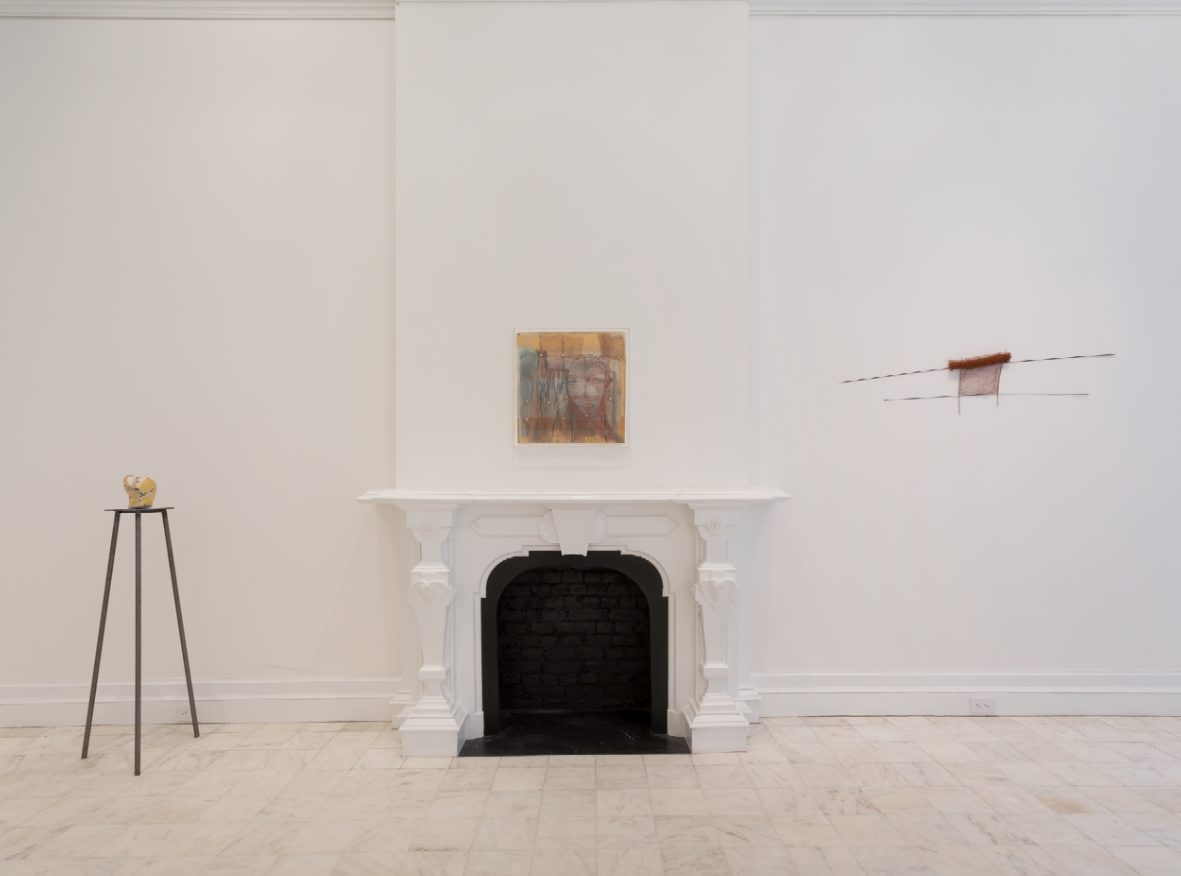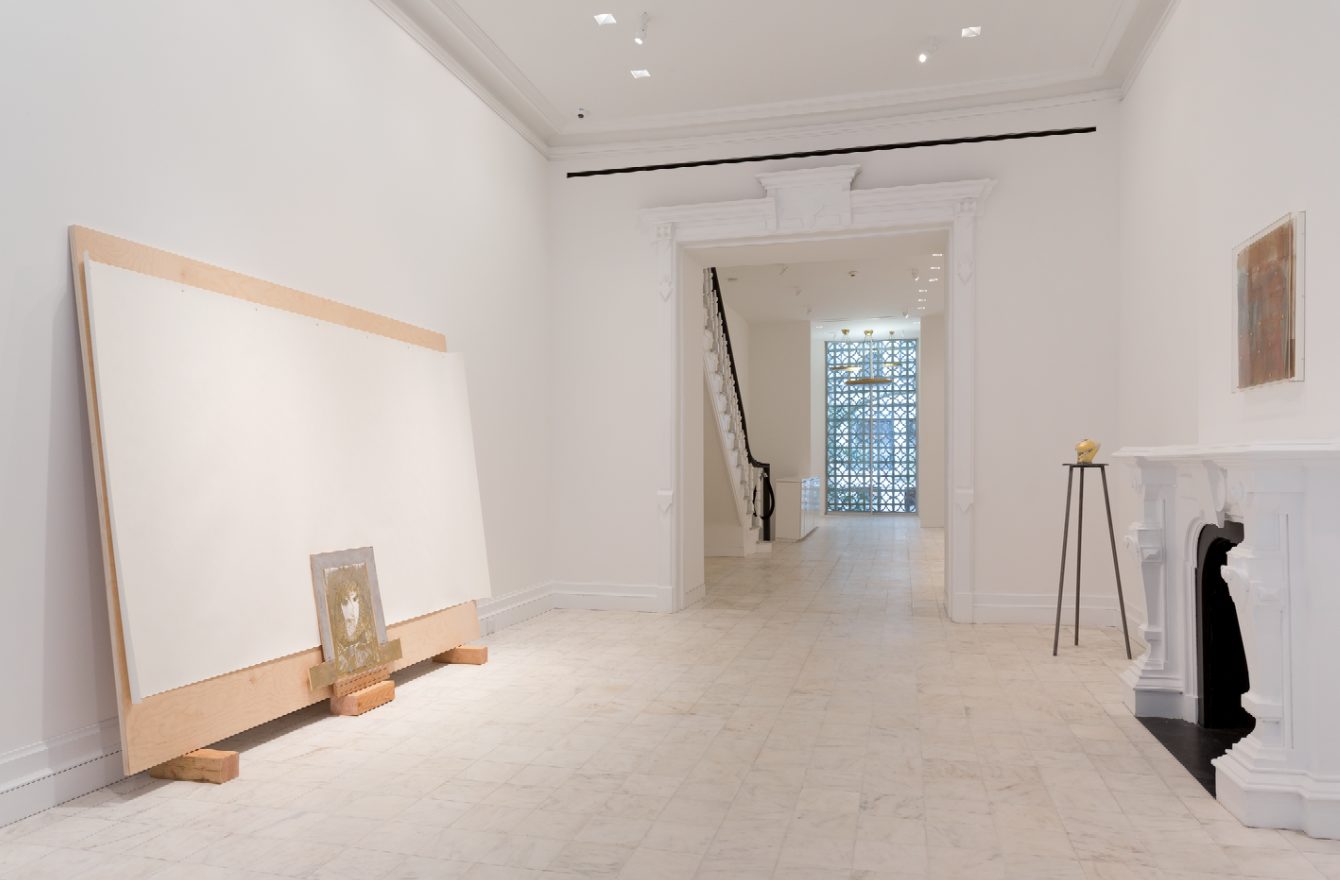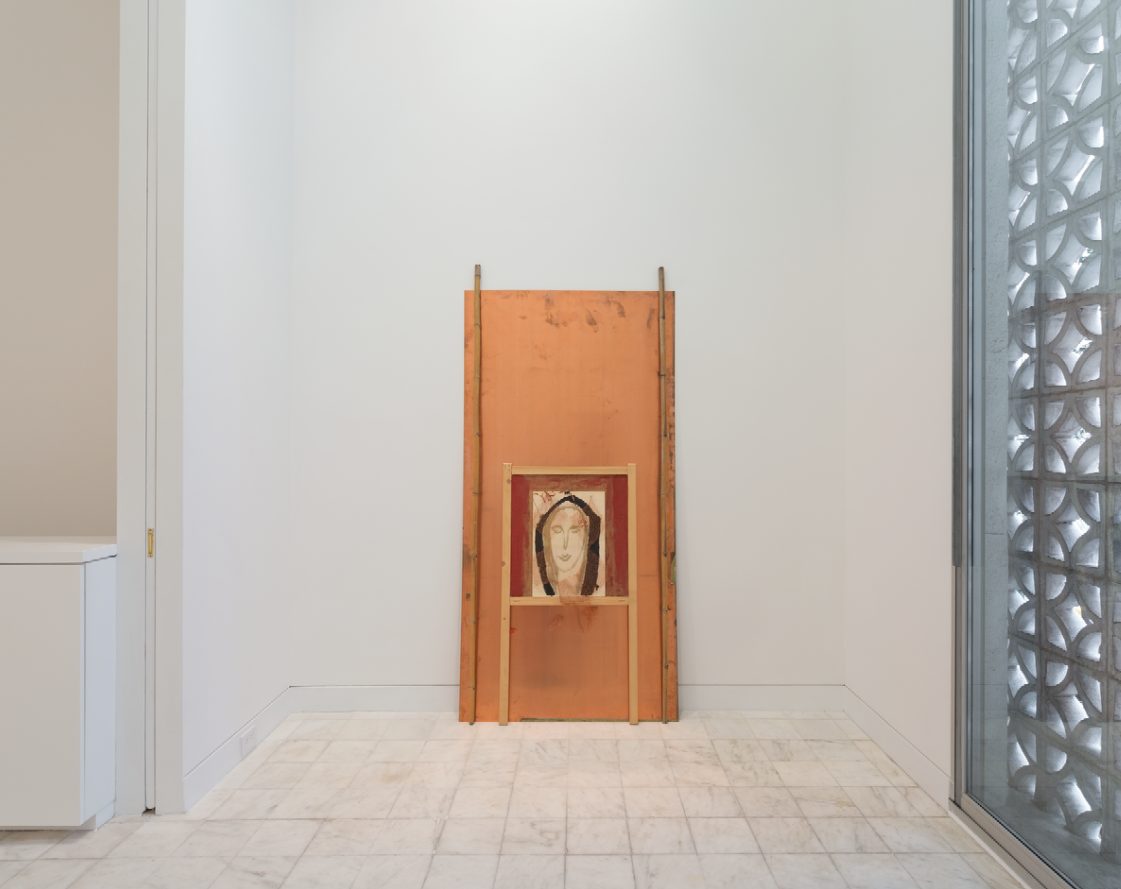The Gladstone Gallery is currently showing eleven works of the Italian artist Marisa Merz (born in Turin, 1926) until this Saturday, February 20th, displayed inside the wonderful building of the modernist architect Edward Durell Stone.

If art history distinguishes the Italian artist as the only woman of the Arte Povera movement and as Mario Merz’s wife, who was her life and art companion, her work transcends every such category and biographical facts.
Visitors will have the pleasure of discovering a universalist and poetic character, underscored by the fact that her works are untitled and undated. The little clay statues barely representing human busts, the thin mesh of copper wires, the drawings and paintings of interleaved and abstract faces—all these works transform the exhibition into an intimate place of contemplation.
To appreciate the timelessness of her work, it is paradoxically important to look at the history of Italy in the 1960s, when the economic boom and the Americanization of culture had a profound impact on Italy’s political, social and environmental structure. In 1969, Marisa Merz joined the Arte Povera group, which had been founded two years before by the critic Germano Celant in Turin, her birthplace. At that time, Celant gathered together artists sharing a desire to abandon traditional painting as an art form, who wished to create objects/sculptures and to question artistic practices through actions and performances. The artists of Arte Povera were also willing to free their works from the market and develop a humanist, anthropological, and anti-capitalist art

This interest in anthropology was influenced by the Italian translation of Claude Lévi-Strauss’ works Tristes tropiques [The Sad Tropics] (1955) and La Pensée sauvage [The Savage Mind] (1962), in which the French anthropologist challenged the notions of modernity and progress held by an ethnocentric Occidental world. During these same years, the reflections on prehistoric art by the French archeologist and historian André Leroi-Gourhan gave contemporary artists an opportunity to rethink manual work and the value of an object’s fabrication in a consumerist world.
With this historical context in mind, the copper thin wire, the little statues, and the drawings of Marisa Merz retrieve their subversive and poetic values. Her art is a craft of simple things. Her first exhibitions were ones displayed in her private residence, enabling the artist also to question the borders between domestic space, studio, and exhibition space
This could explain the feeling one has when entering the exhibition at the Gladstone Gallery. It doesn’t look like any other exhibition space. It is shaped in particular by two installations. One is made of a wooden panel, the other of a copper plate. Both have a painting of a female face placed on the lower part of the panels, as a humble human testimony. These are probably self-portraits.
Copper is an important material for Marisa Merz because of its physical qualities. It is an energy conductor and symbolizes the very function of her artwork, created as an object of exchange between man and society.

The small clay heads represent universal figures, free of gender and origins. They remind us of the artwork of the sculptor Medardo Rosso (1858-1928), which the New York public had a chance to discover last year in New York, thanks to the exhibition organized by the Center for Italian Modern Art (CIMA). Like Rosso’s small wax heads, Marisa Merz’s sculptures are anti-monumental shapes. Their unfinished state is embellished by thin gold leaf, which recalls the alchemical process of matter’s transformation.
Marisa Merz’s art invites the viewer to modify his or her perception of what an artwork is and to rethink its relationship with a universal human and social reality.
We urge you to run to the Gladstone Gallery and discover the fine and humble work of this artist before the imminent closure of the exhibition. It is not to be missed!
